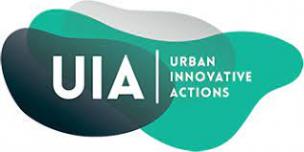

-
Shifting mindsets to involve local communities in urban regeneration
United KingdomBirminghamAppointing community representatives amongst the residents of the target area Edgbaston Reservoir, to become permanent ambassadors, communicating with the City Council, and understanding their challenges – enabling Birmingham in this way to rebuild trust
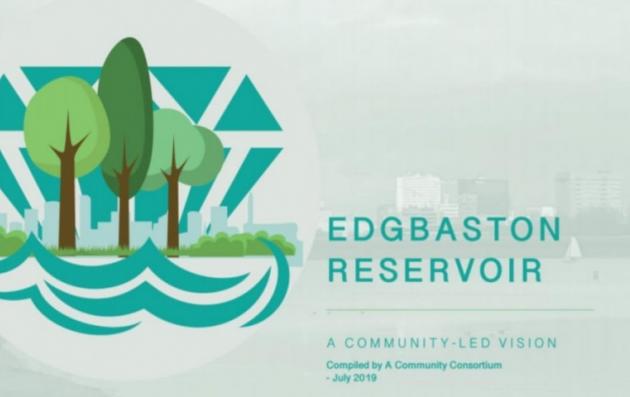 Project CoordinatorCopy linkFacebookXLinkedInEmail1 140 000
Project CoordinatorCopy linkFacebookXLinkedInEmail1 140 000Birmingham’s population is growing rapidly: a predicted 80 000 more homes will be needed by 2032. However, when drastic national austerity measures were introduced after the 2008 financial crisis, severe budget cuts led to a 50% cut in Birmingham City Council’s (BCC) workforce. The Regeneration Team was among the first to be disbanded.
From 2010 nearly all regeneration projects stopped – apart from ‘housing renewal’, which is driven by private developers and focused on capital investment, with little funding for associated social projects. Little space was left for social experimentation or risk-taking.
In 2017, an Urban Innovative Actions-funded project ‘USE-IT’ enabled a fresh approach, with an innovative partnership adding ‘human-centred’ interventions to a housing Master Plan. The new approach was continued with further innovations in the course of the URBACT URBAN REGENERATION MIX transfer network.
The focus of the Birmingham case is on improving the ways the local authority is communicating with their inhabitants. The goal is to promote inclusive growth in priority neighbourhoods. Given the 50% cuts in central government financing of local authorities in the UK, for the Birmingham Council the most important element in regeneration is what and how to finance, so that the competences of the communities become strong enough to be able to operate self sustaining actions, no longer needing permanent financial support from the public side. The city is very concerned by the results/impact of the actions, wanting to know if the few financial resources left have had a real effect in the communities. To achieve all these goals the role of mediators was further strengthened and extended with new tasks and responsibilities.
Solutions offered by the good practice
Whilst in Łódź a city administration mediator works with the community during the regeneration process, Birmingham went a step further, appointing community representatives in the target area – where some had lived for decades. Once trained, they become permanent ambassadors, communicating with the City Council, and understanding their challenges. This enabled Birmingham to rebuild trust in a community who had previously opposed all council plans.
The role of the mediator (based in an NGO), as a link to the city, through the improvised role of the area manager (employed by the city) has proved to be a key element, giving real space to the participative process, putting aside professional intermediaries, as the “speed of trust” shared by the residents should at all costs be upheld. The same mediator, in the need to guarantee sustainability has become the CEO of a community enterprise in the local area and has led the coordination of the ULG with great success.
Sustainable and integrated urban approach
The project introduced a Community Economic Development Planning (CEDP) approach, encouraging local economic development that generates human wellbeing. The power to drive change rests within the community of residents, local businesses, and local service providers including councils, community groups and voluntary sector organisations with a direct stake in the area’s economic health.
Integrated management is a big challenge to all public bodies. It’s been particularly inspiring for Birmingham to see changes introduced by Lodz. The cross-departmental approach of Lodz proved to be very inspiring to Birmingham in building up the localism agenda. In 2019 a delivery unit for the East Birmingham Inclusive Growth Strategy has been established and the structure of this has been modeled on the Lodz Regeneration Team. It is a multi-disciplinary team and aims to link several BCC departments with the city-region administration (West Midlands Combined Authority) – its remit is to support the regeneration of the area and foster inclusive economic development. The main purpose is to involve communities and include them in the redesign process of their neighbourhoods to make sure that the benefits of the development are felt where they are needed the most.
Participatory approach
Setting up an URBACT Local Group (ULG) proved a very powerful mechanism” to significantly improve the city’s engagement with residents. The council forged new links with members of the community – and put the ULG in their hands. This successful community leadership around Edgbaston Reservoir has provided a powerful catalyst for the local authority’s Housing and Planning teams to alter their approaches for future regeneration projects, fully embracing the principles of inclusive growth, involve communities in the co-creation of the local master plan. This is seen as a wider work on culture and policy change and it is still on-going, based on the example of implementation within Urban regeneration Mix, which will be replicated elsewhere within the city (East Birmingham).
What difference has it made
Within the Community Economic Development Planning (CEDP) approach, encouraging local economic development Cooperation with the local community, the original idea was to bring a local sports field back to community use. In talks with the City Council, residents ended up creating an alternative, which led to co-producing an alternative Community-Led Master Plan for the whole Reservoir – instead of campaigning against plans that did not necessarily meet their needs.
Through applying the integrated management model observed in Lodz, Birmingham City Council introduced similar solutions – setting up the Rapid Policy Unit for East Birmingham combining three local authority and creating a powerful body that would work on the regeneration of East Birmingham breaking silo working between directorates and service areas.
Transferring the practice
Birmingham was one of the six cities adapting the Lodz URBACT Good Practice within the framework of the Urban Regeneration Mix Transfer Network. Not having the financial means which were available for Lodz (predominantly Structural Funds resources), in the course of the transfer process Birmingham changed significantly the original model of mediators. The essence of the change was to empower community representatives to become mediators. The idea of the community connector role is a further development of the original Good Practice, with motivating and inspiring small groups of inhabitants to take bottom-up actions, building in them a sense of community and responsibility for the space and the neighbors with whom they share it.
The experience from the Edgbaston Reservoir is already being rolled out across wider East Birmingham with a population of over 240 000. A multidisciplinary team has been set up to deliver a newly launched 20-year East Birmingham Inclusive Growth Strategy modelled on the Łódź Regeneration Team. This enables several city departments to work together with the city-region administration and, crucially, communities will be included in the redesign of their neighbourhoods. So, the benefits of redevelopment will be felt where they are needed most.
Main ThemeIs a transfer practice1 -
-
AS-Fabrik
SpainBilbaoBilbao Alliance for smart specialisation in advanced services towards the digital transformation of the industry
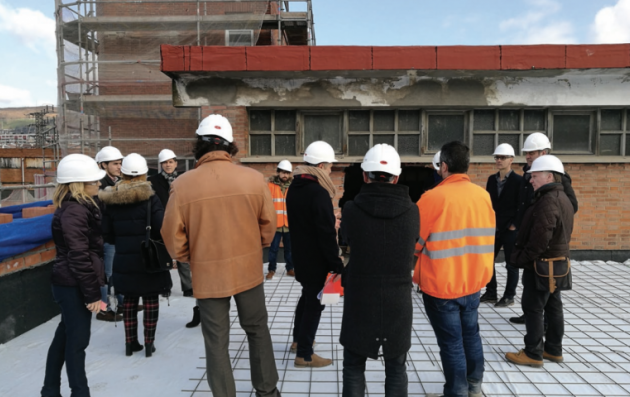 Municipality of BilbaoCopy linkFacebookXLinkedInEmail345 821
Municipality of BilbaoCopy linkFacebookXLinkedInEmail345 821Summary
The project seeks to increase the competitiveness of advanced services sector of Bilbao (Knowledge intense Business Services – KIBS), preparing current or future workers of the KIBS sector, to acquire the needed skills, to supply digital transformation demands. Bilbao is leading a strategic alliance between businesses and universities, local service providers and entrepreneurs, to shape a collaborative pilot ecosystem based on innovative pillars and hosted in a tailor made space for experimentation and incubation of new services. New education programs for university students, entrepreneurs and professionals addressing the new challenges of the industry 4.0 and digital economy will be tested, while networking actions among the main stakeholders, supported by tailored IT tools, will ensure a good match between demand and supply. New business models will be prototyped to support specialised start-ups that will benefit from a Minimum Viable Product (MVP) test Fab Lab for the market validation of new products/services.
At the end of the project, KIBS providers from Bilbao will have access to AS-FABRIK, the “factory for the creation of advanced services for industry”, gathering in a physical space an integrated kit of tools to shape new products and services for the new industry needs, and reinforce their competitiveness. This new model will lead to create a new generation of young and advanced service providers able to supply the challenging digital transformation demands.The innovative solution
For Bilbao economic renewal is of paramount importance. The city is recovering from the global financial crisis, and despite having an unemployment rate significantly lower than the Spanish average, numbers are still high, and the city now faces the challenge of reinforcing its knowledge-based economy. The AS-FABRIK project is a coin with two sides: on the one side, it promotes “smart specialisation”, aiming to make manufacturing –a traditionally strong sector in the city- and related knowledge intensive business services (KIBS) services more competitive. On the other side, it is an instrument to improve the spatial conditions of the local economy, through the regeneration of the Zorrotzaurre area, a former industrial zone that will be turned into a knowledge-based new part of the city.
City government is a key player when it comes to the creation of favourable spatial conditions in which the local economy can flourish; Bilbao has a key role to play on the labour market, to improve the match between supply and demand, and in retraining the workforce; Also, Bilbao can pursue smart specialisation policies: in close collaboration with local stakeholders, promoting specific promising fields of economic development, in alignment with other policy levels, the private sector and knowledge institutes, which helps to guide investments into the most productive direction.A collaborative and participative work
The main objective of the project will be possible thanks to the design, development and validation of a demonstrative model of a “Factory for the creation of advanced services for the industry” (AS-FABRK), based on a public-private collaborative process that will allow the achievement of the following specific objectives: to identify the mind-term, needs of the manufacturing industry regarding Industry 4.0 concept. Through Research Center and Public Agency; to carry out different interdisciplinary programmes for students, entrepreneurs and professionals so they can acquire the necessary skills to answer to the industry demands. Through University; to build a collaborative working methodology to match the education and expertise needs from the industry with the service providers (individually or in cooperation). Through University and Research Center; to create more and more specialised jobs in Bilbao as a result of the launching of new start-ups and new services. Through Business Support Center and Private Companies
The organisational structure of the Consortium comprises the following Consortium Bodies: the project coordination was done by the MUA who designated project coordinator; the Steering Committee has been responsible for the “major decisions” affecting the implementation and success of the project; the Technical Committee has been in charge of supervising the implementation of the work program and is for taking all decisions related to the operational management.The impact and results
The project has contributed to the development of the advanced services sector of Bilbao in several ways. First, +70 local KIBS have been involved in the definition of Bilbao’s advanced services roadmap, co-creating strategic opportunity spaces to be exploited. From such opportunity spaces, 32 collaborations between SMEs-startups-entrepreneurs were stablished, based on the Partnership Brokering mentoring process, to develop and commercialise new technological services 4.0. Also 36 technological services 4.0 ventures were launched, and 12 of them finally consolidated their services in the market with the support of the Startup Boosting mentoring process. Beyond those numbers, +500 professionals were trained in data cycle technologies (embedded systems, IoT, data science, HMIs) as well as in digital business transformation drivers (e.g. smartisation, servitisation), thus significantly increasing their competences to foster new technological services 4.0 opportunity spaces, collaborations and ventures in the near future.
Why this good practices should be transferred to other cities?
AS-Fabrik has achieved a very significant success in transforming Bilbao. This has been possible due to three essential reasons: (1) Cities can leverage the smart specialisation strategy of their regions, (2) Cities can have an active role in the manufacturing sector, and (3) Cities must create landmarks of their transformation that generate a tangible asset in which to leverage a city-wide transformative process. Thanks to the URBACT project In Focus, Bilbao created a methodology to create its own smart specialisation strategy at a city level aligned with that of our region. One of the Basque Country’s strategic economic sectors is Advanced Manufacturing, and AS-Fabrik is the materialisation of that. –AS-Fabrik postulates a new way of supporting manufacturing industry from an urban perspective, and brings back many industrial concepts to the urban environment. Postindustrial cities are widespread through Europe. During their respective de-industrialisation phases, many cities have expelled the factories from their administrative boundaries, and have turned their backs on the manufacturing sector. Bilbao followed a similar path, but has been working for several years in bringing back the industry to the city, not by bringing back the factories themselves, but rather by grouping training and research; creating a network hub where different companies can collaborate in order to access new markets or create strategic partnerships; and finally creating a startup ecosystem.
Main ThemeIs a transfer practice1 -
OpenAGRI
ItalyMilanNew Skills for new Jobs in Peri-urban Agriculture
 Comune di MilanoCopy linkFacebookXLinkedInEmail1 352 000
Comune di MilanoCopy linkFacebookXLinkedInEmail1 352 000Summary
The City of Milan decided to set up an urban coalition with a series of partners (Universities, companies, associations) in order to apply for the first call of UIA Initiative, with the desire to scale up this positioning in the peri-urban agricultural industry, setting up a stable growth and creating new jobs and skills.
OpenAgri is mainly an urban policy experimentation that follows the place-based approach, focusing on new skills for new jobs in peri-urban agriculture. The project area can be defined as an “urban fringe”, representing the transition zone between the consolidated part of the City and the agricultural lands. The challenge was to locate an innovative urban service aimed at creating new jobs, skills, start- ups and innovation in agri-food sector while increasing the level of resilience and sustainability of the City.
OpenAgri (1) improved entrepreneurship by fostering the creation of new innovative firms and social enterprises focusing on sustainability in periurban agriculture and the agri-food sector; (2) Contributed to the overall regeneration of a fringe area promoting a strong focus on social inclusion; and (3) Exploited the potential of several food policy experiments within a single integrated.The innovative solution
OpenAgri is a step forward in the capacity to deliver an innovative integrated strategy. It represents experimental initiatives in the field of labour and innovation policy. The following solutions can be offered:
- Solution 1: Educational and training environment: competencies validation and certification, educational services delivery, business planning, linkages with educational institutions;
- Solution 2: Experimentation Lab: explores innovative techniques in urban agriculture and engage a series of partners on making the best use of public owned 33 hectares plot of land surrounding the south Milan Parco Sud boundaries.
- Solution 3: Entrepreneurship: The process to find innovative projects, agriculture entrepreneurs, companies and/or startups and other organized parties.
- Solution 4: Resilient territorial development: The peri-urban transformation of Milano changed due to OpenAgri capacity to create strong, mutually supportive linkages between rural and urban areas and to engage stakeholders, like MMA spa, with the capacity to promote further investment.
A collaborative and participative work
OpenAgri partnership is a good example of a participative approach, since it brings local stakeholders from education and training, agricultural, cultural, social and policymakers. It is a very complex and integrated project because it keeps together many different dimensions and makes them work in a specific place, but also in a city systematically. It was an opportunity to relate areas of competence of the administration that are very different from one another and that are used to look at problems from their single point of view. This project necessarily had to confront with the people responsible for environment, urban planning, agriculture, labour. Such an integrated project forced to create new relationships and we learned something from this collaboration.
The impact and results
The agro-ecological and landscape design developed by the 30-hectare Masterplan created a new locality for the city. This means designing for shared access to systems and services, planning functional infrastructures, and activating networks between people, places and products.
The focus was on business development and innovation. The best example is the incubation and startups support that developed innovative projects in agriculture and circular economy, with particular focus on the water resource and its use within the food supply chains, along a cycle that goes from production, to transformation, to consumption, to waste and reuse of waste.
Acting smart in the context of OpenAgri was not only about technology, but more about the smart use of local resources and amenities and finding the right balance of business diversity, to create an economy that is specialised but still resilient.Why this good practices should be transferred to other cities?
OpenAgri is an experimental project that challenge existing practices and regulations in cities, regions, policy fields and local contexts. The project proved to be an excellent opportunity to experiment a hypothesis of work that is inherent to UIA program. This is very interesting because it means to start not from a regeneration of the container, but from the activation of new economic dynamics.
It was an opportunity to relate areas of competence of the administration that are very different from one another and that are used to look at problems from their single point of view. This project necessarily had to confront with the people responsible for environment, urban planning, agriculture, labour.
OpenAgri is now a hub for the agri-food sector but the city wants it to be a more complex hub that will work not only on the themes of peri-urban agriculture, but also on circular economy, trying to put them in relation. They have understood that there are interesting connections between peri-urban agriculture and for example the water cycle, thanks to the nearby water purifier. There is clear evidence that the core principles and components will now apply at a larger scale within Milan but also in other European cities.Main ThemeIs a transfer practice0Emailrossana.torri@comune.milano.itRef nid17066 -
Supporting strategy-creation in the field of internationalization
HungaryDebrecenData-driven local governance aiming at improving the life of internationals
 Urban development ExpertCopy linkFacebookXLinkedInEmail208 000
Urban development ExpertCopy linkFacebookXLinkedInEmail208 000Summary
In Debrecen, traditional approaches to economic development were mostly about developing infrastructure, rather than focusing on people. After moving to making data-driven decisions, via survey of needs, Debrecen has been able to develop a strategy to welcome and retain international talents.
Solutions offered by the good practice
Debrecen is the economic, cultural, and scientific centre of eastern Hungary – and the country’s second largest city. With a booming economy, the city allocates considerable resources to promoting international investment and developing local businesses. Recently Debrecen announced more than two billion euros in foreign direct investment and 8000 new workplaces.
Hosting several multinationals such as BMW, Continental and Thyssenkrupp, and one of the oldest and largest universities in the country, Debrecen has a fair amount of international talent – and employment opportunities. Several separate initiatives were available to help international professionals and students on arrival in the city and during their stay.
However, support was lacking in some areas. For example, many expatriates struggled to find suitable affordable housing, or understand key municipal information in Hungarian. Traditional approaches to economic development were mostly about developing infrastructure, rather than focusing on people.
Debrecen’s involvement in WIT was managed by the city’s economic development centre, the municipality-owned company EDC Debrecen Nonprofit Kft (EDC). To enable the municipal government to make data-driven decisions, EDC launched an initial survey to identify internationals’ needs.
Through interviews, and 450 survey answers for online questionnaires, EDC gathered perspectives on Debrecen’s safety, public transport and culture etc. The results showed that international residents appreciated the calmness, green areas, and social life, but lacked centralised information in English and international cultural events. Specific questions to international students also helped analyse potential future skills in the workforce and their match with the city’s growing number of multi-national corporations.
Sustainable and integrated urban approach
The aim is to create an environment, in which internationals find proper living conditions, that enriches the attractiveness of the city. The more international talent settles down in Debrecen, the higher the need for their integration is. Their expertise, skills and experiences help Debrecen reach a higher value-added in terms of economy, living conditions and social aspect.
This process and integrity are emphasized by the Welcoming policy of Debrecen in the framework of internationalization. This policy contributes to the development of Debrecen in the field of local business environment, tourism, education (from kindergarten till higher education) which supports the sustainable urban development.
Participatory approach
The URBACT Local Group (ULG) brought together stakeholders linked to the city’s Investment Strategy and others such as expat relocation services. This helped Debrecen to develop a new motivation to change the city’s mindset towards internationalisation – and played an important role in looking at how they could help make life easier for expats in their city.
Learning from Groningen and partner cities at WIT transnational meetings, EDC Debrecen developed a valuable peer learning approach locally, working with stakeholders individually on specific questions.
The strong stakeholder relations developed through WIT have played a key part in convincing local leaders to also focus on the social aspects of economic development. Building on this, EDC Debrecen will continue to pursue longer term goals, such as improving support for affordable accommodation, and encouraging local companies to recruit international talent.
What difference has it made
Given the linkages of the project to wider inward investment and economic development strategies, they engage with individuals on a one-to-one basis. The objective is to keep on growing the local economy and an integral to that is relationships with people, whether that be multinational companies, workers, or students.
Language was confirmed as a serious barrier for many internationals trying to settle in Debrecen. So, supported by the Vice-Mayor, the ULG and EDC Debrecen decided to develop a website in English with practical information on topics ranging from jobs and housing to cultural programs.
EDC Debrecen also identified other websites where English versions would be useful, for example on public transport, city works, the Christmas Fair, and other events. The local theatre started providing English subtitles, and other foreign languages will be introduced into the city’s cultural programme.
Transferring the practice
The long-term goal is to promote the internationalization of Debrecen, and to keep contributing to its urban and economic development. International presence in Debrecen makes our city a genuine multicultural community and enhances the achievement of the objectives we outlined in our Debrecen2030 Development Program. The city seeks to be as attractive as possible for international talent to stay and in our vision the city cannot be imagined without an international profile.
The base of the transferring journey was to change the mindset not only within our organization but among stakeholders and the municipality.
Main ThemeIs a transfer practice0Emailvamos.mariann@edc.debrecen.huRef nid16283 -
Sharing stories in person and online to strengthen a suburban community
FinlandPoriCreating a place for mobilising citizens, fostering civilian power and urban stewardship through raising awareness towards the values of built heritage
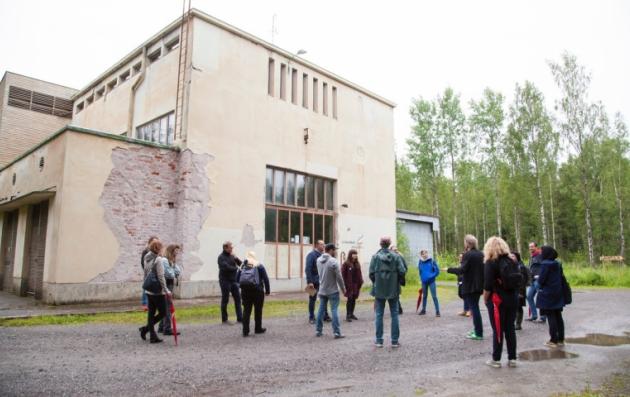 Project CoordinatorsCopy linkFacebookXLinkedInEmail84 500
Project CoordinatorsCopy linkFacebookXLinkedInEmail84 500Summary
Affecting the discourse on built environment and cultural heritage may have striking influence. Audio-visual documentation, storytelling and promotion via internet is a good way to raise awareness and bring visibility to places and people that are otherwise not under the radar of the decision makers.
Sharing stories of buildings brings about the dimension of time in living environment that helps in animating and enchanting the world and community.
Pori has applied the basic idea of the Budapest100 good practice in an innovative way (partly because of the restrictions of the COVID-19 pandemic), transforming an abandoned radio station in the eastern suburban location of the city into a Story Café which offers a cultural, creative and social space, reaching the locals and bringing them together to share stories.
Solutions offered by the good practice
Pori is an old industrial city on Finland’s West coast. The city selected an action area for the Come in! project in its eastern suburbs, which sprang up in the 1950s-1970s in proximity to a copper factory. The area is located 4km from the centre consisting of a park and the nearby residential areas, representing the main trends of post-war architecture in Finland. The park area remains unbuilt because of a shortwave radio station located in the middle, which is owned by the City of Pori and used since 2012 by a local artist community as well as an old vehicle club. With the permission of the city the artists operate the building as a creative space. In the last years, they have opened it to the public several times. Even so, there seemed to be a need for something, bringing together nearby residents, like the good practice of Budapest.
Pori has had various projects in the action area and it has offered funding numerous times to different NGOs to do projects, which resemble the Budapest100 good practice closely, there hasn’t been the level of integration and cooperation between different operators achieved, especially regarding the activating of the local population. All the elements and opportunities for adopting something like the good practice have been present but the impetus for it hasn’t manifested itself.
By 2020 the ULG felt ready to create a community festival highlighting the built environment of the neighbourhood, its character and stories, and introducing the radio station and its potential as a social and cultural space the people could claim as their own. Sadly, due to Covid, these plans had to be cancelled. Instead, a socially-distanced pop-up exhibition showcased the station's history in September 2020 and finally a two week long Story Café in May 2021 opened new spaces in the radio station for public and created a place for histories, stories and art to be shared.
As the society around came to a halt, organisers wanted a new digital approach to dealing with community and a way to highlight the built heritage. They decided to build a website for the history of the building and the local stories relating to it. Stories, photos and different kinds of historical material was crowdsourced with the help of social media, and collaboration with local radios and other media.
The local group members are committed to further develop the radio station and surrounding area into a shared space that brings people together to celebrate the built heritage and take part in active citizenship. The aim is with the development of the cultural use and the digital dimension of the radio station also to reach an audience beyond the boundaries of Pori and Finland.
Sustainable and integrated urban approach
As the city itself has become more aware of the station thanks to the community activities, an interest in its development has grown significantly. Using built heritage to draw attention to a peripheral area succeeded since the municipality started to renovate the radio station and involve the area to the city-level participatory agency project. So, the usage of built heritage helps to gain tangible and visible results that can be communicated both on site in the neighbourhood and online to wider national and international audiences. Many further local actions have been initiated by the community engagement around the area:
- The Väinölä school with over 280 pupils decided to take the area and its multidisciplinary investigation as a theme for the whole school year 2020-2021
- Raised awareness of the international architectural value of Himmeli elderly house
changed the discussion on how to treat the building during its renovation, after a lecture by architect Juhani Pallasmaa (organized by the project coordinator of Come In!) on the heritage of architects Reima and Raili Pietilä who designed Himmeli
- In the end of 2020 the city ordered a master plan for the park area from one of the leading companies in Finland designing smart cities
- Best experts of Finland and students from the Aalto University School of Art, Design and Architecture from Helsinki carried out a full professional standard historical report on the radio station in May 2021. It will be published in summer 2021 working as a guide book for treating the building as a valuable piece of Finnish, European and global cultural heritage.
Participatory approach
For the local coordinators, this building and its surrounding green area seemed like an unused connecting tissue between the suburbs – an urban green space full of history and legends to be discovered to stimulate community spirit.
They built a website to be a platform where not only the official history and unofficial stories and legends, but also the present and ideas concerning the future of the radio station can be shared
The new place means new opportunities also to integrate migrant communities which live in the surrounding suburban locations.
What difference has it made
Too early to say – the place is just now in the process of opening due to the delay caused by the pandemic.
In January 2021 over 600 square meters of new space for culture, art and social gatherings was freed from the radio station when the car club moved away. The same area is part of a new national suburban development project (2020-2022) which offers also investments in infrastructure and so gives sustainability and continuity for the efforts of Urbact.
In May 2021 the Story Café concept proved to be a success with over 750 visitors during two weeks. It demonstrated very well, that a cultural, creative and social space is a very good idea and it has to be developed as well as the overall cultural use of the building.
Transferring the practice
After being awarded the URBACT Good Practice title, Újbuda was able to create the Come In! Transfer Network to which six European cities (Gheorgheni RO, Forlì IT, Varaždin HR, Pori FI, Plasencia ES, Targówek/Warsaw PL) were invited. Equipped by URBACT with a toolkit, the cities could learn from each other. The transfer process was not one-sided, during the transnational meetings the existing practices of some of the transfer cities inspired Újbuda and contributed to the development of ideas to further improve the Good Practice.
At first sight the case of Pori is different from the original practice, insofar it uses a stable place to activate residents from surrounding areas, offering for them new cultural and leisure opportunities. On the other hand, the methods to be used to get the place accepted, are very similar to that of the Budapest100 good practice.
Main ThemeIs a transfer practice0Emailniilo.rinne@pori.fiRef nid16281 -
Experimenting with new types of grants in deprived areas which are not eligible for social funding anymore
FranceLilleFurther develop the area-based policy for deprived neighbourhoods by applying innovative elements in territorial sense, involving new types of local stakeholders and experimenting with new empowering methods
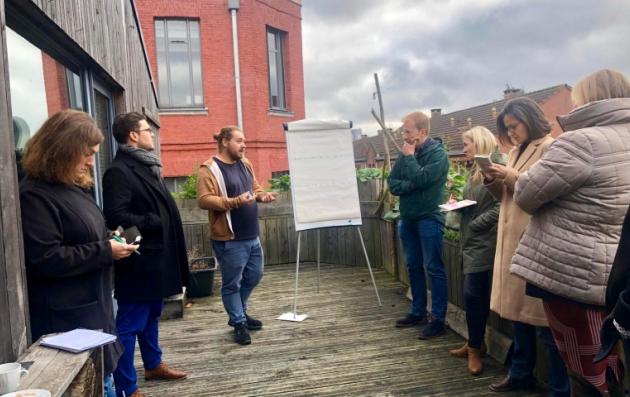 Project CoordinatorsCopy linkFacebookXLinkedInEmail1 068 000
Project CoordinatorsCopy linkFacebookXLinkedInEmail1 068 000Summary
Lille aimed to transfer the Grant element of the Lisbon good practice, improving its own system, applied in the framework of the French urban policy. The introduced innovations refer on the one hand to the territorial choice, and, on the other, on the way how the grants are applied.
Instead of the most disadvantaged priority districts, the new Lille approach focuses on some active monitoring district (former priority districts which have lost this status due to improvement of indicator values) which are isolated, far from any priority districts. Such areas, as the municipalities of Lomme and Haubourdin, experienced a cut of tax benefits from the national state and from other institutions or agencies. Thus it has proven to be difficult to maintain the dynamic without coordination and support from the municipality.
Many diagnosis showed that the usual forms of call for proposals are very competitive, almost excluding the needed cooperation of stakeholders. Lisbon’s call for proposal system requires at least two entities to respond which enhance cooperation in neighborhoods. But call for proposals might not be the best tool to that purpose as it focuses on money issues, while many initiatives need other types of support such as loan of premises or equipment, skill sponsorship… As a consequence, Lille was looking for other methods to offer institutional help to the stakeholders through design thinking.
Solutions offered by the good practice
As a former major textile manufacturing centre, despite its success in economic restructuring, the Lille area has failed to balance the ongoing decline of manufacturing employment. Inequality within Lille Metropolis is greater than in any other major French cities, except for Marseille. Wide neighbourhoods suffer from severe long-term unemployment, urban decay, population decline, poor health conditions and welfare dependency.
Lille Metropole’s existing grant system is framed by the national urban policy, implemented through “City contracts”. Based on political decisions for six years at inter-municipality scale, the city contract is implemented through annual calls for proposals. Non-profit organizations, such as public institutions and NGOs, are invited to submit proposals for projects concerning the identified priorities.
Sustainable and integrated urban approach
French urban policy is area-based. The priority districts are defined by the national state on the basis of inhabitants’ low-income criteria (concentration of populations having resources lower than 60% of the national median reference income). There are 21 priority districts in the Metropole gathering 18% of the Metropole population. It’s the largest proportion among France’s big cities.
Furthermore, 20 areas in Lille Metropole are active monitoring districts which do not fit with the new priority districts’ criteria (the low-income rate or the concentration of population) anymore and are part of a less subsidized transition phase. Active monitoring neighbourhoods are no longer eligible for tax benefits and specific aids owed to priority districts. For example they are not qualified for national aids of the urban policy annual call for proposal.
Lille decided to focus on active monitoring districts which are isolated, far from any priority districts – in such areas it is difficult to maintain the dynamic without coordination and support from the municipality. As pilot the municipalities of Lomme and Haubourdin have been selected.
Participatory approach
Participation has always been one of the pillars of the “politique de la ville” policy. It is identified as one of the main conditions to secure the implementation of the city contract. It is a major challenge for Lille Metropole to increase the interest for civic participation, community life and endogenous development.
What difference has it made
The main ambition of Lille Metropole was to transfer the Grant system element of the Lisbon Good Practice. A new experimental Grant (Call for project) was aimed for, based on the Lisbon experience, finding new stakeholders to be involved, mobilizing more private investments in the priority neighbourhoods and to share new social innovation experiences. Lisbon’s good practice is seen as an inspiration to improve the Lille local grant system on the following points:
- Encourage cooperation between a various range of stakeholders in the neighbourhood (requiring responses by at least 2 different organizations)
- Attract new partners in the neighbourhoods, to draw more partners from the private sector, groups of inhabitants, other NGO’s…
- Promote a more participatory development, by enabling informal groups of inhabitants to participate in the projects
- Foster projects that can reach financial sustainability
Lille Metropole was chosen to be the World Design Capital in 2020, allowing for a year-long city promotion programme to showcase the accomplishments of cities that are effectively leveraging design to improve the lives of their citizens. Within this framework a labelled design service contractor could be involved as URBACT expertise.
In the course of work it became clear that the traditional system of ‘call for proposals’ has to be modified. To enhance the cooperation of the stakeholders the innovation of Lisbon’s call for proposal is applied (at least two entities have to respond which enhances cooperation in neighbourhoods). In order to strengthen qualitative elements, need for other types of support than money, such as loan of premises or equipment, skill sponsorship, other methods are experimented to offer institutional help to the stakeholders through design thinking.
Instead of simple call for proposals the question is raised: what does your area need? A kind of project factory is organized (the intervention of Francois Jegou), through organizing local workshops, listening to people’s ideas.
Recently the workshops are going on. ComUnityLab gave a starting point, now a new dynamics has been created which will last for 2 more years. Then the method will be distributed to other areas of MEL with precise conditions, how many organizations have to be included.
Transferring the practice
Lille was one of the seven European cities (besides Bari Italy, Aalborg Denmark, Sofia Bulgaria, Ostrava Czech Republic, Lublin Poland, The Hague Netherlands) of the Com.Unity.Lab Transfer Network, led by Lisbon, to transfer the URBACT Good Practice of Lisbon on the integrated toolbox for deprived neighbourhoods.
Equipped by URBACT with a toolkit, the cities could learn from the good practice and also from each other.
Main ThemeIs a transfer practice0Emaillretournard@lillemetropole.frRef nid16280 -
Creation of a new NGO platform
SloveniaIdrijaThe new ‘Towns’ Living Room’, established by the municipality in a vacant building, involves the heads of the city administration, active citizens, social services, development agency, public library and nursing home, local clubs and various associations
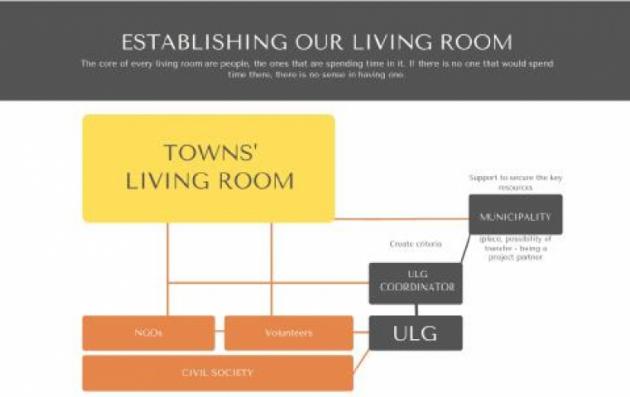 Project CoordinatorCopy linkFacebookXLinkedInEmail11 800
Project CoordinatorCopy linkFacebookXLinkedInEmail11 800Solutions offered by the good practice
Fostering the engagement of inhabitants who are not in paid employment but have access to skills and resources to help support those in need, builds the capacity of civil society to engage with often complex social problems in a structured way. Altena founded its NGO platform in 2008 and called it Stellwerk. The Stellwerk started without a budget. The municipality made available premises, paid the energy and cleaning bills, provided a minimum of administrative resources. Currently the Stellwerk has 8 volunteer workers who co-ordinate several hundred volunteers providing disability support, arts and music groups, home visiting and home care services, refugee integration and much more. The Stellwerk provides an essential channel of communication between civil society and municipality.
In February 2020, Idrija launched its new ‘Towns’ Living Room’: the municipality offered a vacant building to house a small ULG involving the heads of the city administration, active citizens, social services, development agency, public library and nursing home, local clubs and various associations.
The ‘Towns’ Living Room’ links organisations with interested citizens if needed, but it is a “by the people for the people’’ model. Activities have already included events on housing and building refurbishment, chess classes, evening of poetry, book presentation, reading of fairy tales for children, knitting evening to raise breast cancer awareness and many more. It hosts services, such as a municipality supported volunteer based free transport service for elderly people and a book corner provided by the local library.
Sustainable and integrated urban approach
For successful transfer of good practice, it connected and established cooperation across different departments of a municipality. As well as also it strengthened the connection between local actors, NGOs and municipality.
With the practice based on ‘people to people’ approach it also improves the quality of design and implementation of smaller local actions.
Good practice works when there is trust established between all different parties – municipality, NGOs/volunteers, institutions and citizens.
Participatory approach
The practice is based on people, NGOs, volunteers that are encouraged by ULG. The coordination between all the elements was done by ULG coordinator. It includes all important stakeholders and interested citizens which is essential part of success of a practice based on ‘’people to people’’ approach. It uses bottom-up approach which leads to that people actually want to be part of good practice and want to give to community because they are having opportunity to fulfil their wishes and they actually have a say in what will happen.
What difference has it made
After official opening of the premises of the NGO platform (the "Towns living room’’) volunteers started to turn up. Ideas are coming in all the time which means that people are actually engaging and doing things on their own. There is also a wide acceptance now in public. At the start there were a lot of opinions about "just another project’’ and now those opinions are different and more in a way "we really needed that’’ "it is nice to have a place where we can do something’’. A lot of ideas are already on the list to do, and everyone is more confident now. With less Covid-19 restrictions the "Town living room" was able to open up again which resulted in a rich monthly program with different activities organized as well as giving people a place to hang out a bit without organized activities.
Transferring the practice
Idrija was one of the seven European cities (besides Manresa Spain, Igoumenitsa Greece, Isernia Italy, Melgaço Portugal, Aluksne Latvia, Nyírbátor Hungary) of the Re-grow City Transfer Network, led by Altena, Germany, to transfer the URBACT Good Practice of Altena on finding opportunities in declining cities. Some of the cities were transferring the NGO platform while others the Pop-up shops.
This good practice has also been chosen as one of 5 URBACT National Practice Transfer Initiatives (NPTI) and will be transferred to 6 other Slovenian municipalities. The project is led by Slovenian NUP, with Tina Lisac as national expert.
Equipped by URBACT with a toolkit, the cities could learn from the good practice and also from each other.
Re-grow City deliberately focused on small and medium sized towns, because they face distinctive challenges in terms of constrained resources and limited technical capabilities when compared to larger cities. These constraints offer opportunities, however, for example robust social networks with high levels of ‘social capital’ and short decision making routes that speed up the adoption of untested or controversial methods. Taken together with the resources and skills local people have, shrinking cities are places of opportunity and can demonstrate considerable resilience even where they face severe constraints.
As a side-outcome of the Re-Grow City network, in May 2021 the new pan-European network ReGrow Towns has been established. This is aimed for towns below the size of 50 th residents and is an addendum to the already existing networks of Eurocities (cities above 250 th residents) and Eurotowns (cities between 50-250 th residents).
Main ThemeIs a transfer practice0Emailtina.lisac@icra.siRef nid16279 -
Let’s Play Cork
IrelandCorkExperimenting, improvising and evolving playful strategies to improve the lives of our citizens
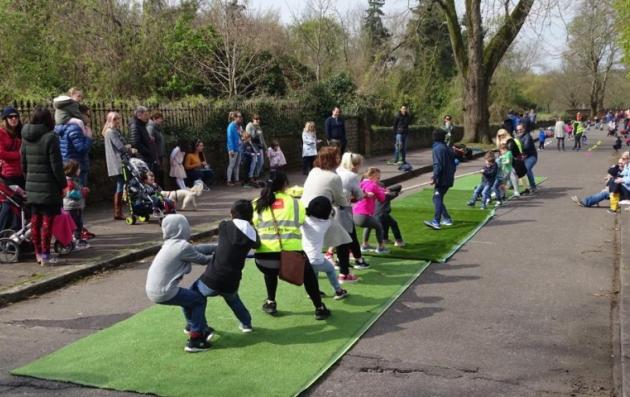 Cork Healthy Cities CoordinatorCopy linkFacebookXLinkedInEmail125 622
Cork Healthy Cities CoordinatorCopy linkFacebookXLinkedInEmail125 622Solutions offered by the good practice
Cork is Ireland’s second largest city, and a busy port, a hub of industry, located in the south-western corner of the country. URBACT Playful Paradigm Network, ‘play’ for Cork City Council was predominantly about the construction and management of playgrounds. A holistic understanding of play did not exist beyond a handful of practitioners. Learning from Udine meant adapting the god practice and inventing new project that could respond to local constraints such as the challenge to organize public events due to legal requirements for public liability insurance, or lack of resources as for the ludobus project.
The creativity of the URBACT Local Group led to the creation of a new figure, the part-time Play Development Officer and 26 certified volunteer ‘Play Leaders’, which developed a wide range of projects such as:
- Toy Libraries: in Cork there are ten municipal libraries throughout the city. Thanks to the Network, members of the City Library and a member of Young Knocknaheeny, a group that specializes in early childhood development, had the opportunity to do a study visit to Paris and see how a Toy Library works. They came up with the idea to store “Community Play Bags” in the ten municipal libraries. The “Community Play Bags” are oversized sports gear bags containing equipment for cooperative play, which is appropriate for different ages. By placing them in the library system, the project has been developed to allow for borrowing by community-based organizations seeking to incorporate play in their activities.
- Playful Placemaking The Marina is a road of approximately 2.5 km along the River Lee in the city. This road was mainly used for car traffic, yet it had potential as an amenity for outdoor recreational activity and for the general enjoyment of the river. The Cork project team decided to test two project actions namely to organize a playful festival and some pop-up play events by applying to stop car traffic on the Marina road for car traffic on four Sundays in the summer of 2019. The communication was not on ‘closing the road’ per se, but rather on opening the road for play. This was done as part of the city’s annual Lifelong Learning Festival.
- Ludo buses inspired by the lead partner Udine’s good practice, Cork has developed its own Ludo Buses. Ludo buses are vehicles that contain outdoor games that can be driven to any public space/gathering and made available to the community as a play resource for a number of hours.
- Play Packs With the disruption of Covid-19, the Cork City Council’s Social Inclusion Unit teamed up with the community and voluntary sector to create Play Packs. They contained booklets, video-tutorials and materials to create games at home, such as lollipop sticks, colouring pencils and crayons) and were distributed to hundreds of families in need during the first period of the Covid emergency. The Play Packs created a buzz in the local community and were seen as a useful tool also for other disadvantaged categories. Cork recently decided to start a new wave of distribution to people with intellectual disabilities and to people living in nursing home and long-stay hospitals.
Sustainable and integrated urban approach
The project of Cork has predominantly invested into soft measures for social inclusion, promoting the integration and collaboration of different actors both across different departments of the municipality with diverse and multi sector group, called “Let’s Play Cork”, coordinated through Cork Healthy City (Cork is in fact in the World Health Organization “Healthy Cities” network since 2012) and Cork City Council along with members of Cork City Libraries, Young Knocknaheeny (a group that specializes in early childhood development), Foróige (a charity which addresses youth development), Cork Lifelong Learning Festival and Meitheal Mara (a community boatyard in Cork). The scope has been to foster a play-oriented approach to education and public space management in the city.
In terms of sustainability the city has continually sought seed funding from alternative sources to make Let’s Play Cork continue after the end of the Transfer Network. The city is also looking at specific investments based on the lessons of the project. Notably, the City Council has earmarked the riverside road for a EUR 4 million project to permanently pedestrianise it. Additionally, Cork is now set to transfer the Playful Paradigm Good Practice to more Irish cities, supported by the URBACT National Practice Transfer Initiative 2021-2022.
Participatory approach
The URBACT Local Group (ULG) brought Cork City Council together with public bodies and associations across health, education, culture and sports. The sense of shared ownership and entrepreneurial approach sparked unexpected opportunities and partnerships.
The ULG has evolved into a steering group called ‘Let’s Play Cork’ that has already started advocating for the concept of the ‘playful city’ to become a core objective of the City Development Plan and is also contributing to a ‘Manifesto of EU Playful Cities’.
What difference has it made
The Playful Paradigm Network has led to changes in attitude towards gaming and playing both in local, regional and national policy design and visioning, visible in new and fruitful partnerships between organizations.
Along the way Cork also learned to interject play into its interagency networks, allowing it to disseminate the core values and objectives of play. Partnering organizations subsequently incorporated play into their ways of working as well as to their services and events, engaging in new ways with the communities that they serve and reach. This has unlocked new forms of creativity to help tackle some of the societal challenges that every city faces.
Transferring the practice
Exchanges between Cork and the city of Udine were already in place before the Urbact Transfer network , namely through the World Health Organisation’s Healthy Cities network. But the URBACT Playful paradigm network unlocked the capacities to pragmatically experiment the approach of playing the city in a number of projects, whose ideas and creativity is tied to peer learning among the European cities.
Transnational meetings between network partners enabled participants from Cork to bring home specific ideas and skills. For example, representatives of the city library and an early childhood programme were able to visit a toy library in Paris, leading to adoption of a similar model in Cork. Another workshop, in Viana di Castelo (PT), gave the Cork local group the con dence and theoretical basis to create the new River Lee Placemaking network described above.
Main ThemeIs a transfer practice0Emaildenise.cahill@hse.ieRef nid16271 -
New urban gardens bringing communities together
LithuaniaVilniusGardening has wider impacts on the city that one would expect
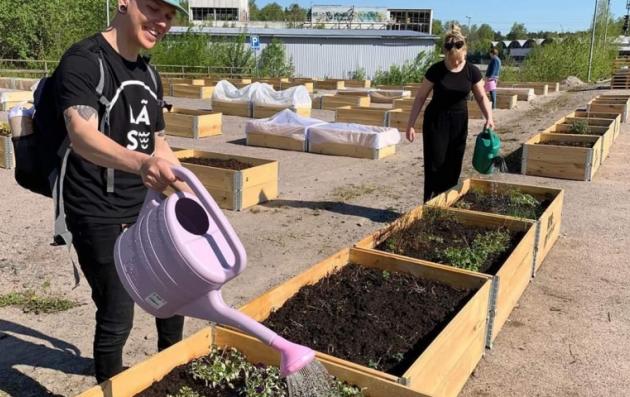 Project CoordinatorCopy linkFacebookXLinkedInEmail589 000
Project CoordinatorCopy linkFacebookXLinkedInEmail589 000Summary
Implementing community gardens can be highly beneficial for a city not only for environmental purpose but also for social ones: to fight social exclusion, and bring neighbours together, at the same time as organisation education activities for children around them. This is what Vilnius has done while transferring the Good Practice of Rome, in ‘sleeping districts’, with training for gardeners and set-up of adequate urban management schemes.
Solutions offered by the good practice
Lithuania’s capital is particularly green, with 44% of its territory dedicated to forests, parks and squares. However, while family garden allotments persist from Soviet times, understanding of shared community gardens is still limited.
The municipality owns various public spaces, including grounds of schools and kindergartens, but most vacant space in Vilnius is privately or state-owned. This has challenged the municipality’s capacity to promote urban agriculture.
The shared urban garden initiatives that have existed so far have done so without city support. Meanwhile, most community groups lack the funding and permanent staff necessary to commit to gardening projects.
RU:RBAN gave Vilnius the knowledge to promote urban gardening as a way to fight social exclusion, and bring neighbours - even in high-rise ‘sleeping districts’ - together.
The ULG focused on a key component of Rome’s practice – a clear set of regulations for communities to know how and where to start an urban garden. It was not a process of copy-paste, but of understanding and adapting.
Nevertheless, thanks to the efforts of the group, the City Council approved a new set of rules and regulations for urban gardening in March 2021. In addition, the municipality released a guide to urban gardening which gained national media attention as part of a broader environmental awareness drive.
Sustainable and integrated urban approach
The practice developed by Vilnius following the experience of Rome is based strongly on environmental protection and awareness by developing urban gardens. Its social aspect is key as these gardens are actually “community” gardens, with all well-known and documented benefits for neighourhoods as groups and as individuals, such as mental health, socialisation, skills development etc. In particular trainings and sharing of seeds can have wider impacts on the local economy.
Participatory approach
A new URBACT Local Group (ULG) was set up including gardening enthusiasts, NGOs, schools, the municipality, and the Environment Ministry.
The members of Vilnius’ ULG benefited collectively and within their own specific fields from the experience and ideas of Rome and the other partner cities. This included gardeners sharing seeds and participating in “Gardenizer” trainings. It also involved “totally fascinated” city planners learning how Rome developed urban farming at a huge scale, right down to the smallest details of their financing model.
ULG members also gained valuable knowledge about new communication tools, including through trainings in Riga where they learnt to use tools such as ‘vox pops’ and understand the value of their story for others.
What difference has it made
The Municipality has also started a new strategic long-term program - CITY+ - aimed at recreating a sense of community in the former soviet districts. One of the important aspects is to create a feeling of ownership by allowing citizens to have their own yard and therefore an opportunity to create their small urban gardens.
With around 60% of the city’s population living in these buildings, Vilnius’ new urban garden trend looks set to continue.
Transferring the practice
Vilnius implemented the practice from Rome by starting with one existing community garden and built from there. Gradually, the number of urban gardens in Vilnius started to grow. Furthermore, the model is now formally included in the city’s urban development policies.
Another interesting aspect was that they linked the development of community gardens with ecological education and vegetable growing in kindergartens - an activity appreciated by partner cities during their study visit.
Solving land ownership issues will remain a key challenge for the spread of urban gardening, requiring ongoing dialogue with private and state owners. To free up more land, Vilnius will also start discussions with the National Land Authority to allow communities temporary use of state-owned land for their urban garden initiatives.
As for its own land, the city will now be proposing the option of including an urban garden whenever it discusses green area renovation plans with communities. The municipality also expects to continue making further improvements to relevant legal procedures to facilitate urban gardens.
Main ThemeIs a transfer practice0Emailausra.siciuniene@vilnius.ltRef nid16269 -
A blue gem making digital waves
GreecePiraeusIncubating and supporting blue economy
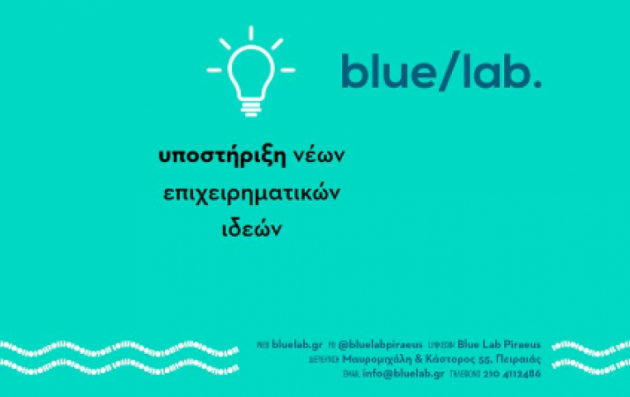 Project CoordinatorCopy linkFacebookXLinkedInEmail163 688
Project CoordinatorCopy linkFacebookXLinkedInEmail163 688Summary
Based on Barnsley’s good practice, Piraeus launched its own ‘Blue Lab’– the first Blue Economy Innovation Center in Greece. Blue Lab is one of the few centres in Greece that has a dedicated ‘makerspace’ for start-ups to focus on creating functional prototypes to develop their main ideas.
Solutions offered by the good practice
The Municipality of Piraeus, part of the Athens urban area, urgently needed to support recovery after the 2008 global financial crisis. Despite being a major freight and passenger port, the number of businesses and jobs were falling in all sectors, with several large shipping companies relocating elsewhere.
Piraeus developed an integrated ‘Blue Growth Strategy’ (2018-2024) aiming to develop innovation and higher value jobs in sustainable businesses related to the sea, coasts and maritime heritage. Goals included attracting international technology businesses, encouraging existing businesses to adopt modern technologies, and helping young people improve their digital skills.
The municipality joined the Tech Revolution network in particular to enhance the digital aspects of their Blue Growth Strategy.
Based on Barnsley’s good practice, Piraeus launched its own ‘Blue Lab’– the first Blue Economy Innovation Center in Greece. The municipality worked with a private contractor to found Blue Lab in a modern facility near the harbour, that welcomes young people and early-stage businesses who want to develop technological and business skills through a range of services (seminars, co-working space, advanced technology). Blue Lab is one of the few centres in Greece that has a dedicated ‘makerspace’ for start-ups to focus on creating functional prototypes to develop their main ideas. A variety of industrial equipment supports the activities.
Before the end of its first year, Piraeus’ Blue Lab had welcomed hundreds of visitors, and provided 1080 hours of business mentoring, 608 hours of tech and entrepreneurship training, multiple workshops and networking events, sparking more than 28 prototyping projects and 27 entrepreneurship ideas.
University students and professors also linked up with Blue Lab. When COVID-19 struck, they used the facilities to produce prototype technology solutions that could benefit the community – including a ‘Blue Air’ concept to sterilise air using ultraviolet radiation, and Personal Protective Equipment such as surgical masks.
Sustainable and integrated urban approach
Blue Lab and Piraeus’s activities seek to improve the social and economic wellbeing of citizens through the creation of more and better jobs and businesses. The infrastructure also supports the development of skills and opportunities increasingly needed for the development of innovative solutions for addressing the current issues at stake in the blue economy. Blue economy is a strategic priority of Piraeus and it offers an integrative framework for sustainable urban development as it constitutes a socio-economic opportunity due to the city’s unique maritime position.
Participatory approach
A crucial step in transferring the good practice was engaging the local community, educational institutions and business representatives and private-sector partners as part of an URBACT Local Group (ULG). Cooperating with local stakeholders, the team decided to provide state-of-the art technologies - such as 3D designing/printing and microelectronic systems – to promote innovation and to develop digital adoption programmes for local businesses.
Crucially, the ULG approach achieved wholehearted engagement – including with enthusiastic senior city decision-makers. This sparked strong new partnerships. Schools in particular have been keen to engage with Blue Lab, for example through field visits.
What difference has it made
Tech Revolution has boosted Piraeus’ strategic vision for the local Blue Economy and, starting this June, the municipality is going to offer business start-up, scale-up and innovation support as core services, as in Barnsley.
Cooperation with businesses has also led to plans for a second, bigger innovation centre as a springboard for entrepreneurial activity. Piraeus’ plans include a larger co-working space, training facilities to upskill the workforce and investment in more advanced technologies.
The hope is that this energy will feed into a broader receptiveness to digital adoption and subsequent development of higher-value jobs in the local economy.
Transferring the practice
Piraeus’ learning journey was supported by exchanges with Tech Revolution city partners – including at a transnational meeting for all network partners in Piraeus - and reinforced by visits from Barnsley and the URBACT Lead Expert. These exchanges helped identify the most important lessons and inspiration for their own city, in particular around the centre’s economic viability, promising digital technologies, new ways to engage local stakeholders, and how to promote collaboration and start-up formation.
Main ThemeIs a transfer practice0Emailblueoffice@piraeus.gov.grRef nid16268


